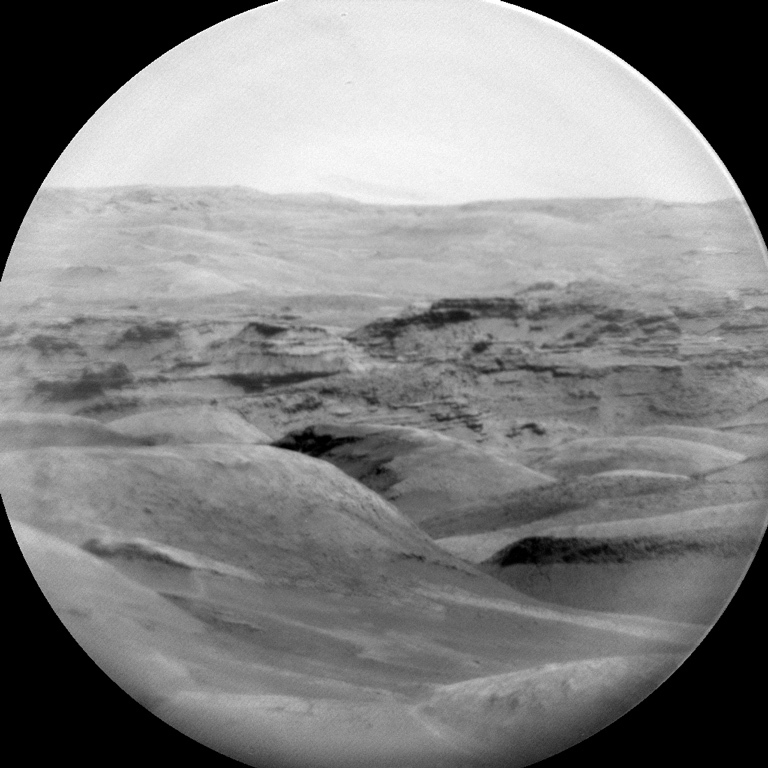3 min read

The arm diagnostic activities over the weekend, including MAHLI images and an APXS integration, were successful. This news gave Curiosity the green light to move - ever so slightly forward - from her double drill workspace at "Mary Anning” toward our next drill site near the “Ayton” target. Ayton itself and the immediate area around it have been the subject of many analyses, from MAHLI to APXS to ChemCam to Mastcam, since we arrived at the Mary Anning drill site. The team thought the prominent dark gray nodular features in this area warranted a more detailed look with a drill sample. Bumping toward Ayton was the main focus of the plan, but Curiosity will keep busy both before and after the short drive.
We start the plan gathering a bit more diagnostic data from the arm by testing out a few more systems on the turret and arm. After stowing the arm, Mastcam will acquire a couple of mosaics that have otherwise been occluded by the position of the arm during the diagnostic activities of the last several sols. Mastcam will image “Skelmorlie” in stereo. This sand target has been imaged several times to track the wind-induced changes, so today’s plan is the last time to document those changes before our own position changes. Another change detection observation will be acquired at “Upper Ollach,” a trough in the sand just off the left of the Mary Anning slab. The trough has changed dynamically under the competing forces of our drilling at Mary Anning and the slow, relentless action of the wind. Mastcam will also acquire four stereo images from the left side of the workspace, the last part of the Mary Anning site that has been hidden by the arm. ChemCam gets in on the imaging action by adding to the amazing mosaic of images from the "Housedon Hill” area east of the rover, one small piece of which is featured above.
With the arm free to move, MAHLI will take care of a couple of systematic check outs of the instrument. The first check out is courtesy of Mastcam, with three Mastcam images aimed at the MAHLI cover. The second check out is done by MAHLI herself in a series of images of the sky, some with the cover closed and some with the cover open. These are called sky flat images, which image a bland portion of the sky to track the amount of dust on the MAHLI cover and the MAHLI front lens.
After Curiosity bumps forward toward Ayton, she turns her attention to the sky again the next sol. Navcam and Mastcam will measure the amount of dust in the atmosphere, Navcam will shoot a movie looking for dust devils spinning across Gale crater, and ChemCam will acquire passive spectra of the atmosphere. ChemCam will also pick up a systematic measurement of their titanium calibration target.
Here’s to a (slightly) new world!
Written by Michelle Minitti, Planetary Geologist at Framework







